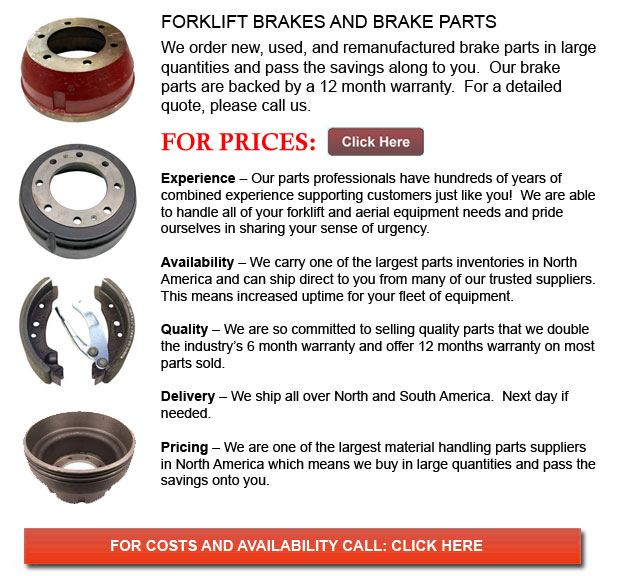
Forklift Brakes - A brake wherein the friction is supplied by a set of brake pads or brake shoes which press against a rotating drum shaped unit known as a brake drum. There are some specific differences among brake drum kinds. A "brake drum" is commonly the definition provided when shoes press on the inner exterior of the drum. A "clasp brake" is the term used to be able to describe whenever shoes press against the exterior of the drum. Another type of brake, known as a "band brake" makes use of a flexible belt or band to wrap all-around the exterior of the drum. If the drum is pinched in between two shoes, it can be referred to as a "pinch brake drum." Similar to a standard disc brake, these types of brakes are rather rare.
Old brake drums, prior to the year 1995, needed to be consistently modified so as to compensate for wear of the shoe and drum. "Low pedal" could cause the required modifications are not carried out satisfactorily. The vehicle could become dangerous and the brakes can become ineffective if low pedal is combined along with brake fade.
There are some different Self-Adjusting systems used for braking obtainable today. They can be classed into two separate categories, the RAI and RAD. RAI systems are built in systems that help the device recover from overheating. The most recognized RAI manufacturers are AP, Bendix, Lucas, and Bosch. The most famous RAD systems consist of Ford recovery systems, Volkswagen, VAG, AP and Bendix.
Self adjusting brakes normally utilize a device which engages just when the vehicle is being stopped from reverse motion. This stopping approach is suitable for use where all wheels use brake drums. Nearly all vehicles now utilize disc brakes on the front wheels. By operating only in reverse it is less probable that the brakes will be adjusted while hot and the brake drums are expanded. If adjusted while hot, "dragging brakes" can happen, which increases fuel expenditure and accelerates wear. A ratchet device that becomes engaged as the hand brake is set is one more way the self adjusting brakes may function. This means is only appropriate in applications where rear brake drums are utilized. If the emergency or parking brake actuator lever goes beyond a particular amount of travel, the ratchet developments an adjuster screw and the brake shoes move toward the drum.
There is a manual adjustment knob situated at the base of the drum. It is generally adjusted through a hole on the other side of the wheel and this involves getting beneath the vehicle together with a flathead screwdriver. It is of utmost significance to be able to move the click wheel correctly and tweak every wheel evenly. If unequal adjustment happens, the vehicle could pull to one side during heavy braking. The most efficient method to be able to guarantee this tiresome job is completed safely is to either raise each wheel off the ground and hand spin it while measuring how much force it takes and feeling if the shoes are dragging, or give every\each and every one the exact amount of manual clicks and then perform a road test.
![]() Click to Download the pdf
Click to Download the pdf
Forklift Parts
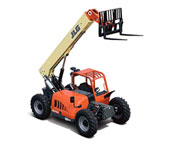
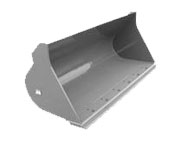
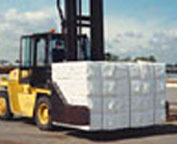
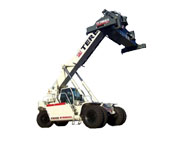
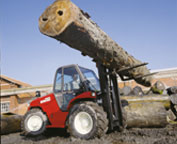
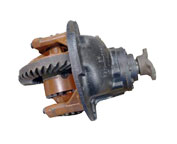
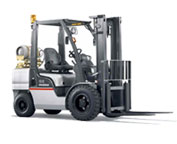

Lift Parts Express
TOLL FREE: 1-888-695-7994
Tampa, Florida
forkliftpartstampa.com
Email Us
About Us


